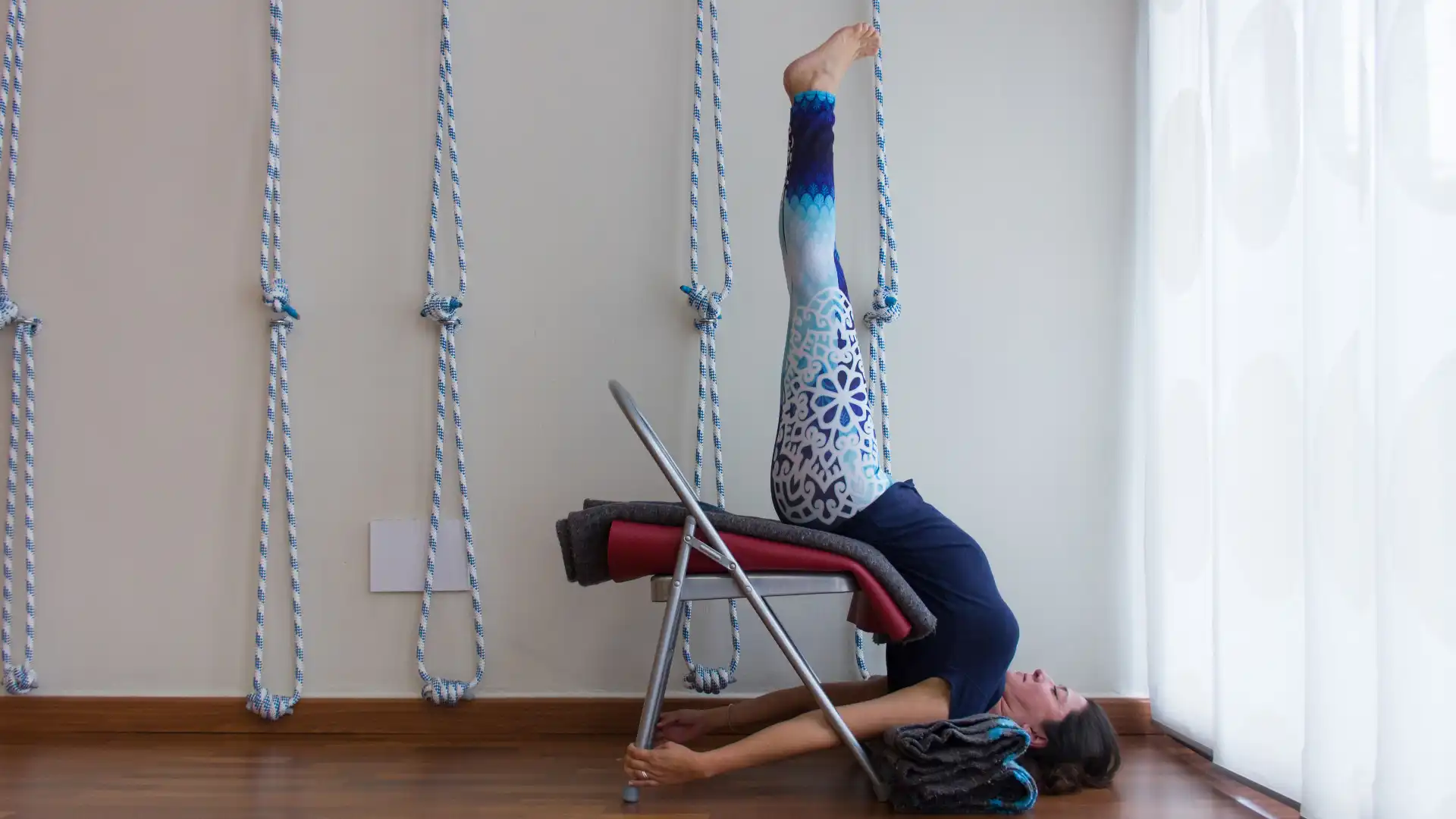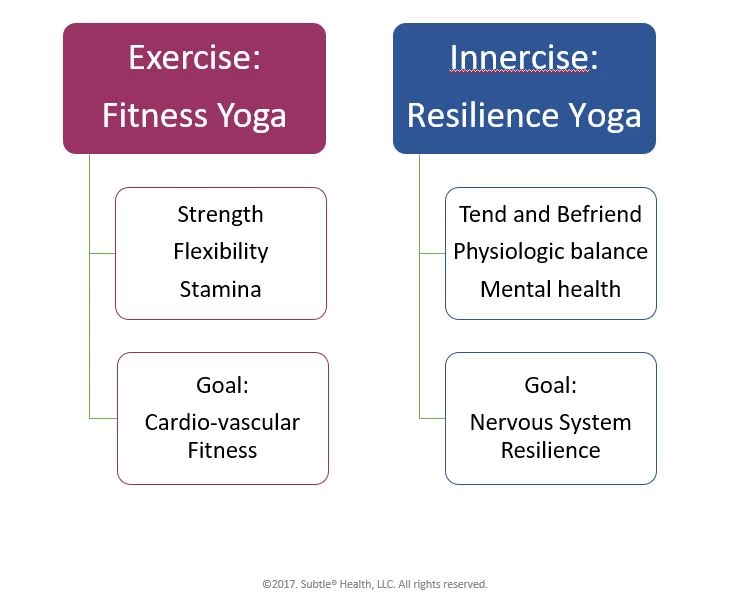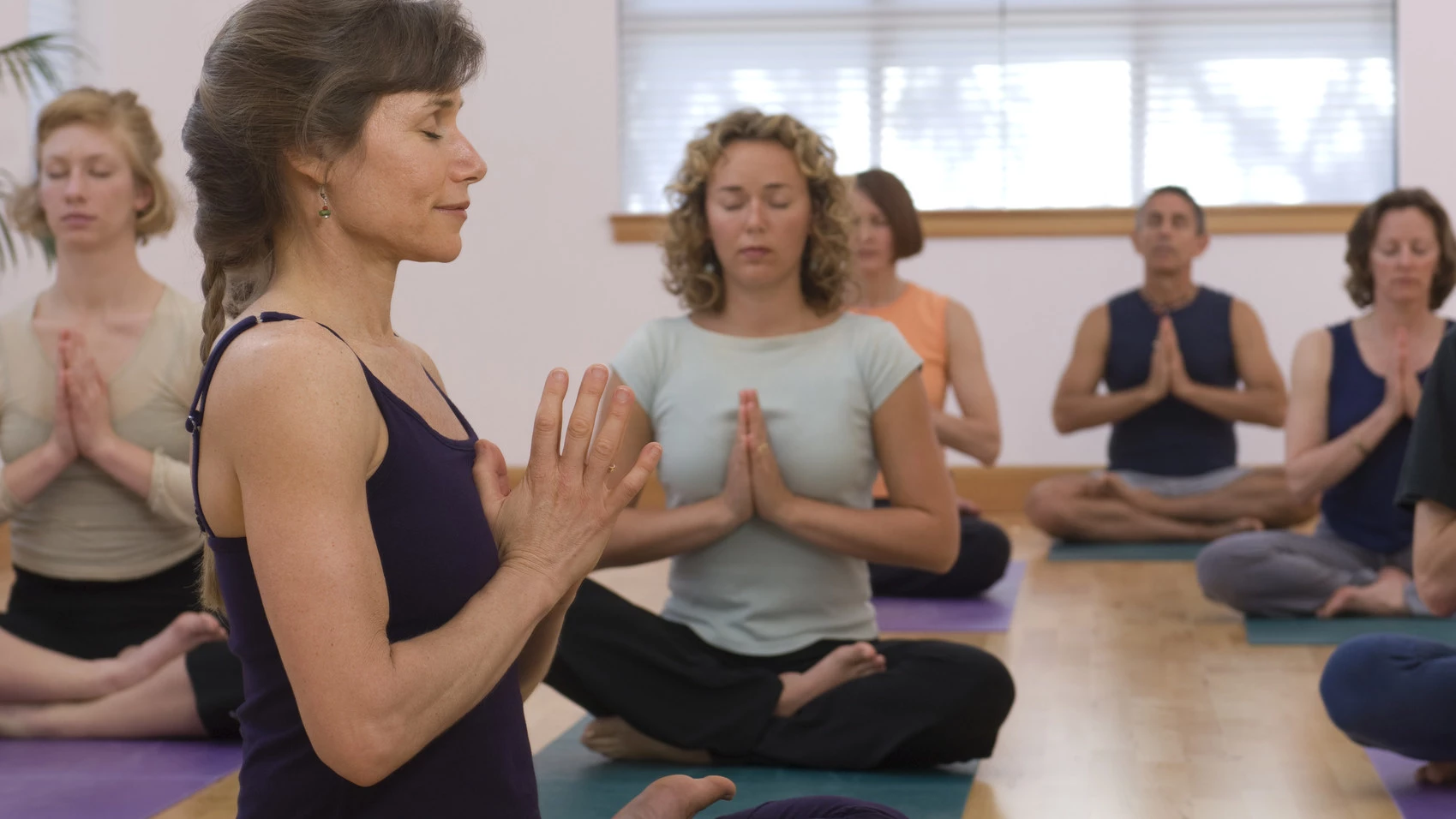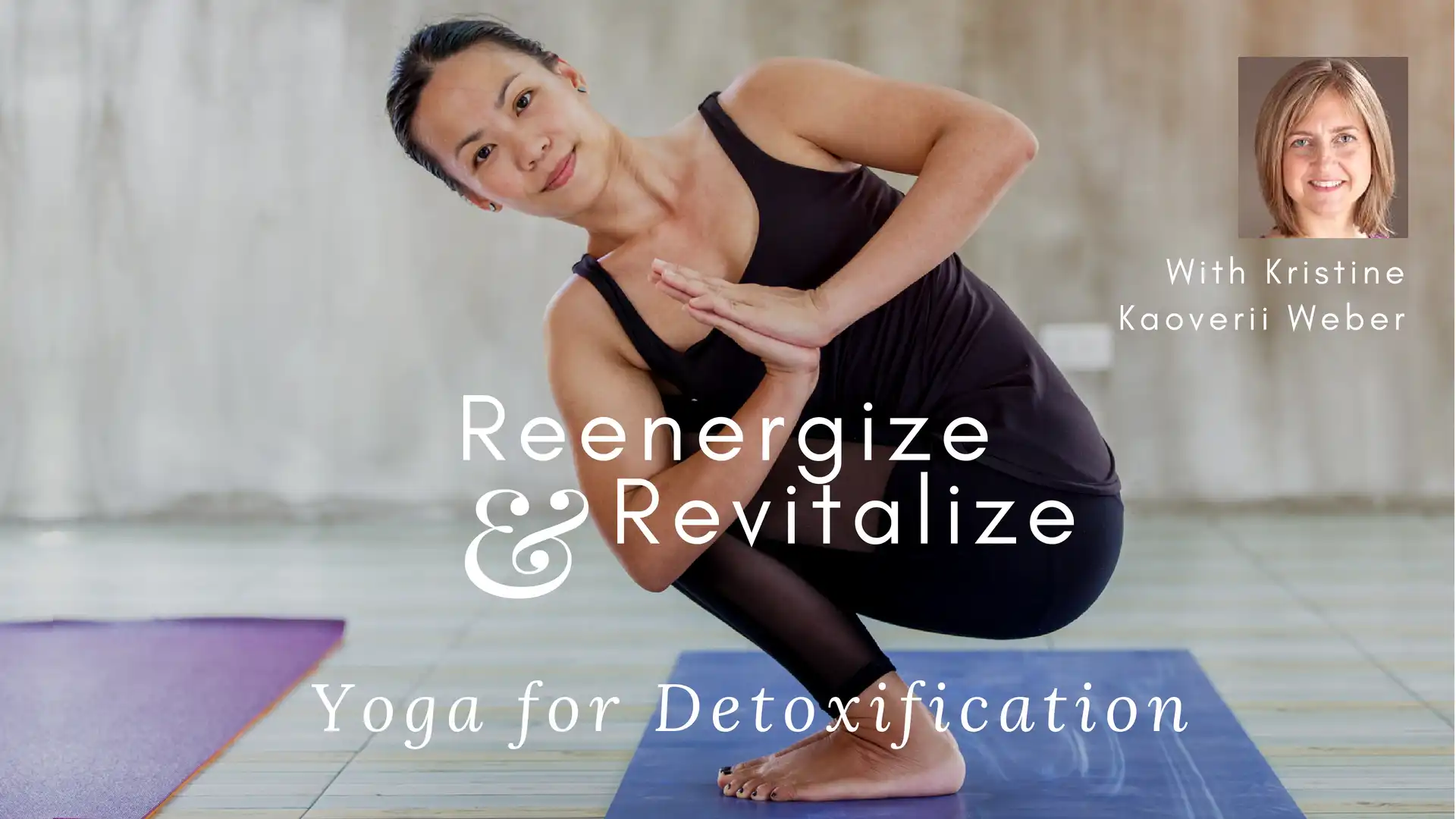Resilience Training: Why I Don’t Take My Yoga Hot and Sweaty

Here is a simple graphic I’ve been using in my training programs (and in yoga classes) to explain why the yoga I teach is different from other kinds of yoga out there.

After I moved to Asheville in 2001, I quickly realized I had a problem.
I couldn’t figure out why people weren’t coming to my classes. I had done well teaching in the small town in New Jersey I had been living in for the previous six years. But here people were doing stronger practices. I didn’t like hot, fast, sweaty yoga and I didn’t want to teach it. I knew what I practiced and taught was valuable, but I had no convincing way of explaining why.
Asheville then (and still, for the most part, today) was a mecca of fitness-based yoga. Students would come to my classes and say things like, “Oh my god, that was so relaxing!” and then only show up once every few months.
I’d see them in Earthfare, and they’d be like, “You’re such a great teacher!” but I’d never see them in class. One woman searched me out at every yoga event or class that we both were attending, sent me emails, wrote me texts, sent me articles, but she never even came to one class!
I watched the popular teachers build followings of regular, consistent students who came without fail two or three times a week to their strenuous classes and wondered why couldn’t I get that kind of following?
One day it finally dawned on me that, surprise, students were using yoga for fitness. For about 50 years (since the advent of Kenneth Cooper’s “aerobics revolution” in the late ’60s), Americans have been pummeled with the importance of exercise. So, since everyone knows you have to work out about three times a week, of course, the most fitness-focused (and fit-looking) teachers had the biggest followings. People were going to yoga to feel the burn. They were doing what they had learned was important to their health—exercising.
Yoga for Resilience
It’s not that I have a problem with exercise (a little secret, I love spinning!). I’ve always been into exercise. But subtle yoga is different. 
The system of yoga that I have learned, synthesized, and teach is designed to do something else—to build resilience—and this requires a different kind of training. Around 2010 I started diving into neurobiology and research.
Time and time again, studies showed that slow, meditative yoga does something different to your nervous system than exercise. It helps to build proprioception and interoception. It helps to develop brain structures related to pro-social behavior, self-regulation, and positive effect.
Slow yoga trains the respiratory musculature, the vagus nerve, heart rate variability, interoception (which may be correlated with empathy, BTW) and the relaxation response.
And here’s the thing that we are just starting to understand (and why this work is so critically important): The rest-and-digest part of the nervous system needs to train. And you can’t train it with Netflix and wine. It needs active participation. It needs training. And this kind of training is different than cardio training.
It requires mindful participation. You can’t get it in the same way while you are moving hot, fast and sweaty. It requires attention, and if you want to be healthy, it is essential. It’s so essential that the authors of a study published last year from the Benson Henry Institute said this:
“The data suggests that mind-body interventions should perhaps be instituted as a form of preventative care similar to vaccinations or driver education [emphasis added]. Such interventions are likely to be useful in population management and supported self-care, have negligible risk and cost, and may help reduce the demand curve in health care.” (1)
This kind of training overlaps a bit with fitness training, sure. Nothing is completely linear. But in general, it requires a different approach.
What we do is resilience training. My suggestion is to keep your eyes open because it is, undoubtedly, the next big thing.
Study with Kristine Kaoverii Weber and YogaUOnline
Re-energize and Revitalize: Yoga for Detoxification.
Reprinted with permission from Kristine Kaoverii Weber and subtleyoga.com.

 Committed to the widespread adoption of yoga as a population health strategy, Kristine Kaoverii Weber, MA, C-IAYT, eRYT500, YACEP has been studying yoga and holistic healing for nearly 30 years, advocating, speaking and teaching about yoga since 1995, and training educators since 2003. Her organization, Subtle®Health, LLC, provides holistic, mind-body trainings, education, and clinical services with the mission of enhancing community health infrastructure. She is the director of the Subtle® Yoga Teacher Training for Behavioral Health Professionals program at MAHEC in Asheville, NC; presents workshops and trainings internationally, and is frequently invited to speak about yoga at health care conferences. After completing her BA and MA at Georgetown University, Kristine trained extensively in many styles of yoga including Viniyoga, as well as in Asian bodywork therapy, and homeopathy. She is the author of The Complete Self Massage Workbook and has published articles in the International Association of Yoga Therapist’s journal, Yoga Therapy in Practice and other wellness publications. Her work has been featured in Redbook, BodySense, Women’s World, Natural Health, and Lifetime TV. She is a regular presenter for yogauonline.com and www.yogamate.com. She has provided yoga therapy to various populations in institutions and privately since 1996. Find out more at www.subtleyoga.com.
Committed to the widespread adoption of yoga as a population health strategy, Kristine Kaoverii Weber, MA, C-IAYT, eRYT500, YACEP has been studying yoga and holistic healing for nearly 30 years, advocating, speaking and teaching about yoga since 1995, and training educators since 2003. Her organization, Subtle®Health, LLC, provides holistic, mind-body trainings, education, and clinical services with the mission of enhancing community health infrastructure. She is the director of the Subtle® Yoga Teacher Training for Behavioral Health Professionals program at MAHEC in Asheville, NC; presents workshops and trainings internationally, and is frequently invited to speak about yoga at health care conferences. After completing her BA and MA at Georgetown University, Kristine trained extensively in many styles of yoga including Viniyoga, as well as in Asian bodywork therapy, and homeopathy. She is the author of The Complete Self Massage Workbook and has published articles in the International Association of Yoga Therapist’s journal, Yoga Therapy in Practice and other wellness publications. Her work has been featured in Redbook, BodySense, Women’s World, Natural Health, and Lifetime TV. She is a regular presenter for yogauonline.com and www.yogamate.com. She has provided yoga therapy to various populations in institutions and privately since 1996. Find out more at www.subtleyoga.com.
Resources
(1). Stahl, J. E., Dossett, M. L., LaJoie, A. S., Denninger, J. W., Mehta, D. H., Goldman, R., . . . Benson, H. (2015, October 13). Relaxation Response and Resiliency Training and Its Effect on Healthcare Resource Utilization. Retrieved from https://www.ncbi.nlm.nih.gov/pmc/articles/PMC4603901




